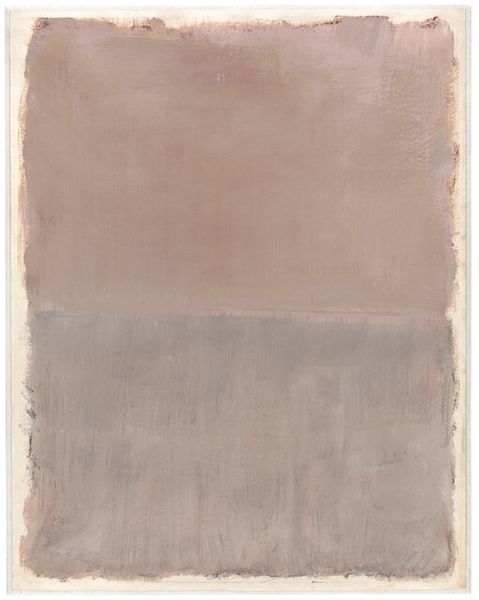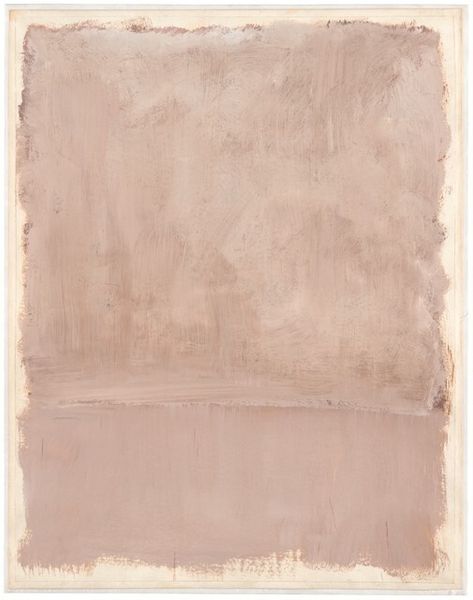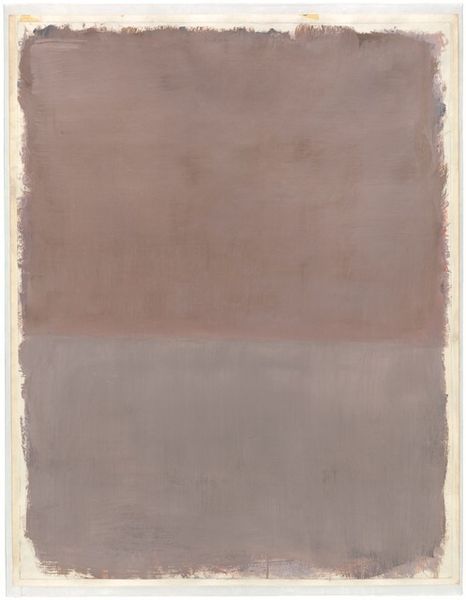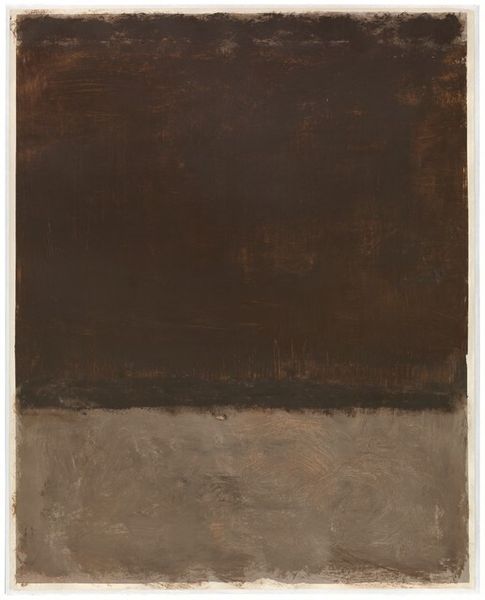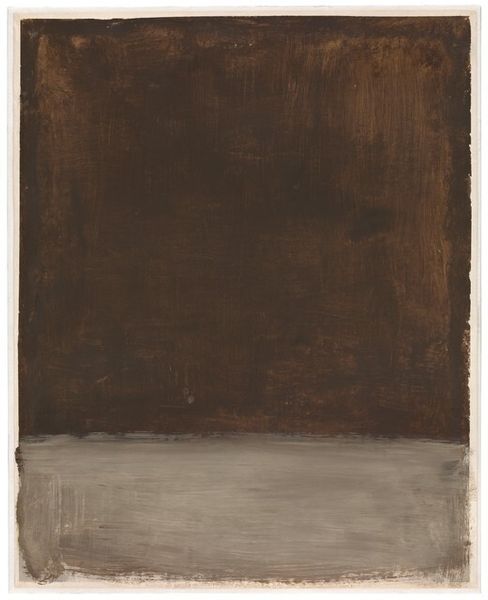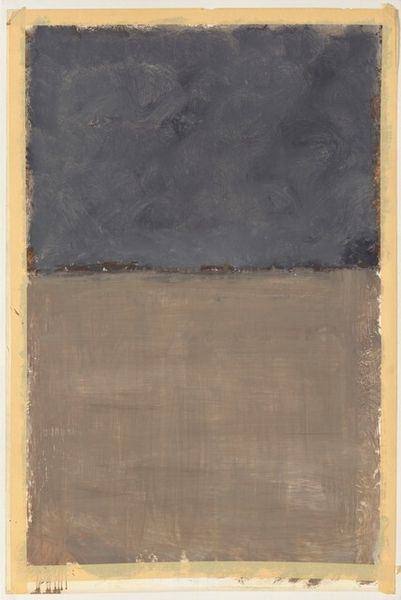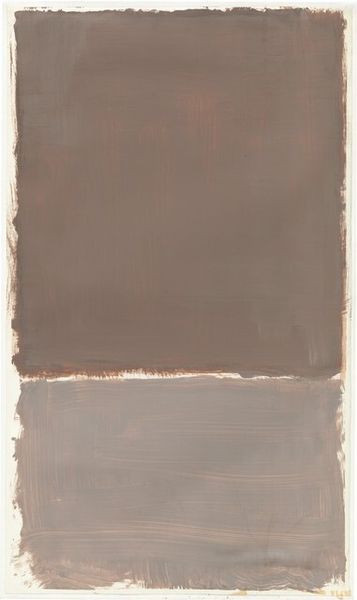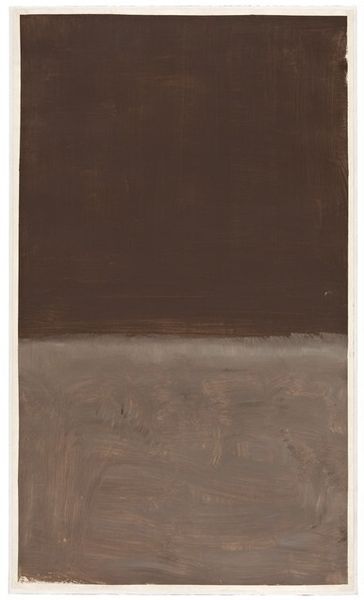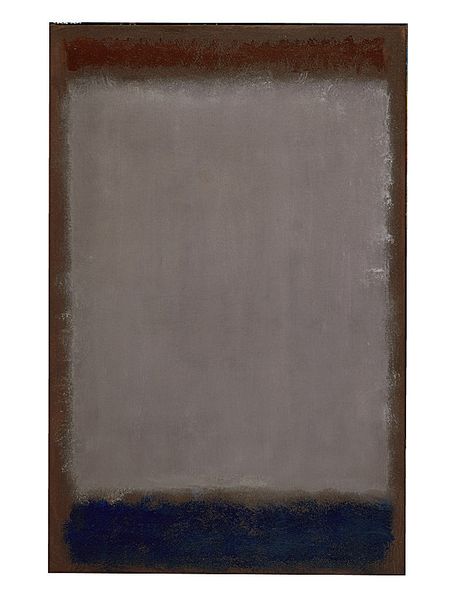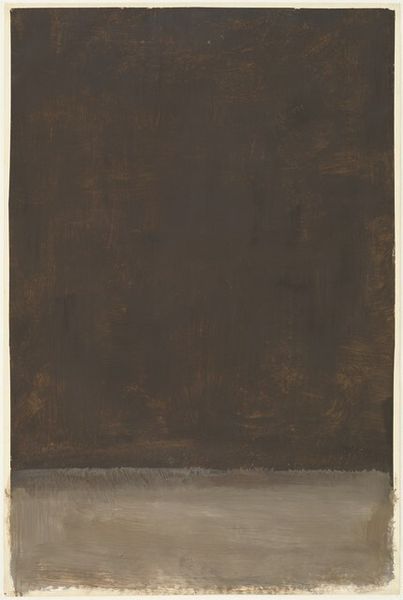
drawing, painting, oil-paint
#
abstract-expressionism
#
drawing
#
painting
#
oil-paint
#
colour-field-painting
#
geometric
#
abstraction
#
modernism
Dimensions: sheet: 127 × 107.47 cm (50 × 42 5/16 in.)
Copyright: National Gallery of Art: CC0 1.0
Editor: So here we have an Untitled painting by Mark Rothko, created in 1969. It seems to be primarily oil paint, and it's incredibly serene, almost meditative. What strikes you most about this piece? Curator: I'm immediately drawn to the process and material realities. Rothko's layering of oil, creating subtle shifts in the gray-mauve hues, reveals the physical act of painting itself. Think about the cost of the materials he employed, the labour involved, the environment where he chose to manufacture this piece: what does it reveal? Editor: The physical act, yes, I see that now. How much control he had and did the market then value? I suppose you could say this exposes both artistic creation and the influence of capitalism? Curator: Precisely! This "Untitled" work exists because Rothko could afford materials, labour, and a space to produce. This wasn't some act of divine inspiration but a very concrete practice situated within a particular economy. Do you see any evidence that Rothko made "errors" of application in the composition? Editor: I do! Around the edges you can see bleed-through from previous layers, imperfections, even drips here and there. These imperfections suggest a challenging the notion of perfection inherent in “high art.” Curator: Exactly. Rothko isn’t creating a seamless illusion. Instead, he invites us to contemplate the tangible, material nature of the painting and his studio practice. How it was made matters as much as what it depicts. Editor: So, by emphasizing process, Rothko's work invites scrutiny beyond mere aesthetics? It challenges what gets valued and consumed as “art." Thank you! Curator: Precisely. Understanding art this way opens many paths toward comprehension, especially in this instance!
Comments
No comments
Be the first to comment and join the conversation on the ultimate creative platform.
